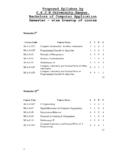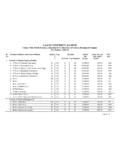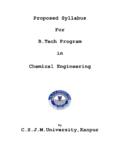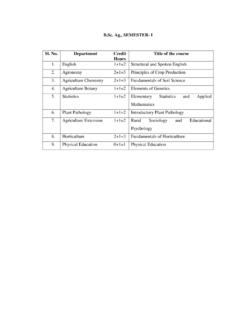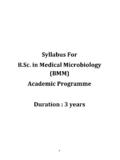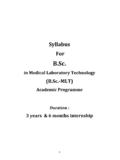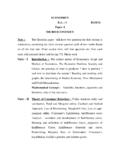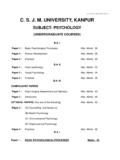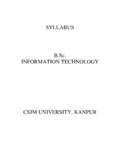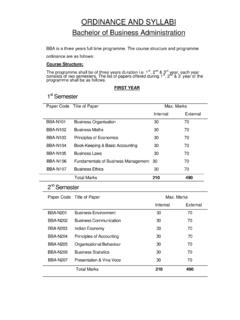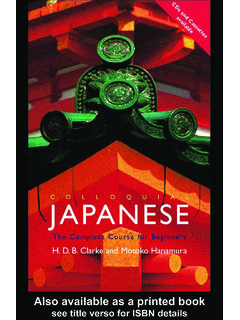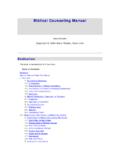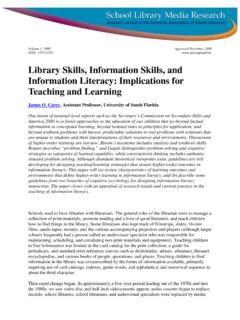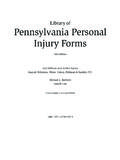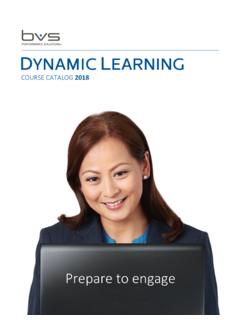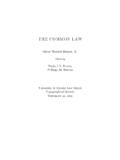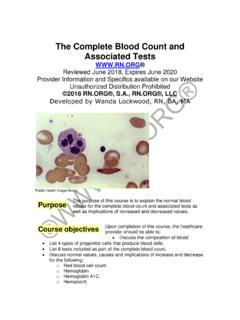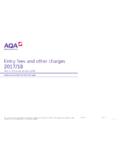Transcription of BACHELOR OF LIBRARY & INFORMATION SCIENCE (B. Lib. Sc ...
1 1 BACHELOR OF LIBRARY & INFORMATION SCIENCE (B. Lib. Sc.) One Year Degree course /Two Semester course course CONTENTS Paper No. Paper Title Sessional marks Exam marks Total I Foundations of LIBRARY & INFORMATION SCIENCE 20 80 100 II Management of Libraries & INFORMATION Centers/Institutions 20 80 100 III Knowledge Organization and INFORMATION Retrieval (Theory) 20 80 100 IV Knowledge Organization Practice I 20 80 100 V Knowledge Organization Practice II 20 80 100 VI INFORMATION Sources 20 80 100 VII INFORMATION Users, Systems and Services 20 80 100 VIII LIBRARY & INFORMATION Technology.
2 Theory 20 80 100 IX LIBRARY and INFORMATION Technology : Practice 20 80 100 Grand Total 180 720 900 2 Paper-I FOUNDATIONS OF LIBRARY & INFORMATION SCIENCE Unit-I Essentials of LIBRARY and INFORMATION SCIENCE Librarianship as a profession LIBRARY ethics User education Public relation Extension service LIBRARY path finders (Guides) LIBRARY building Unit-II Conceptual framework and history of libraries Social foundation of libraries History of libraries Development of libraries in India, and Britain Five laws of LIBRARY SCIENCE Types of libraries Different types of document and their role (from papyrus to current)
3 Unit-III Laws relating to libraries and INFORMATION centers LIBRARY legislation-need and essential features LIBRARY acts in India Press and Registration Act and delivery of books (Public LIBRARY ) Act Copyright Act Unit-IV Professional associations Role and contribution of national organizations such as UGC, ILA, IASLIC, RRRLF in the growth and development of libraries in India Role and contribution of International Organizations such as LA, ALA, IFLA, FID, UNESCO, ASLIB in the growth and development of Libraries.
4 Methodology: Lectures, self study, case studies, assignments, experimental learning exercises Sessional assessment: will be based on 2. Assignment attendance. 3 PAPER-II MANAGEMENT OF LIBRARY & INFORMATION CENTRES/INSTITUTIONS Unit-I Essentials of management Concept, history and functions of management Concept and principles of scientific management Concept, elements and standards of TQM Unit-II LIBRARY Management-general aspects HRM Delegation Personnel Communication Job description, analysis.
5 Specification and evaluation Selection and Recruitment Motivation Training and Development Performance appraisal Unit-III LIBRARY Management specific aspects LIBRARY authority and LIBRARY committee Staffing Different sections of libraries and their working Annual report Care & preservation of LIBRARY resources (printed and digital) Unit-IV Financial management in libraries Budget and Budgeting Techniques Resources Mobilization including outsourcing Cost effectiveness & cost benefit analysis Financial control Methodology: Lectures, self study, case studies, assignments, experimental learning exercises Sessional assessment: will be based on 2.
6 Assignment attendance. 4 PAPER-III KNOWLEDGE ORGANIZATION & INFORMATION RETRIEVAL (Theory) Unit-I Knowledge organization-I Knowledge organisation and subject organisation Bibliographic organization and different approaches to documents Concept and theory of LIBRARY classification Species of LIBRARY classification Normative principles of LIBRARY classification Standard schemes of LIBRARY classification and their features Latest trends in LIBRARY classification Book Number Schemes Unit-II Knowledge organization-II Concept and history of LIBRARY cataloguing Purpose.
7 Structure, types and physical forms of LIBRARY catalogue including OPAC Standard codes of LIBRARY cataloguing Normative principles of LIBRARY cataloguing Centralized and cooperative cataloguing, simplified and selective Cataloguing, Union Catalogue CCF and MARC Natural and artificial language Subject heading lists and Thesaurus Unit-III INFORMATION retrieval-I Concept of Index and Indexing Pre-coordinate indexing-Chain, PRECIS, POPSI, Post-coordinate indexing -UNITERM Keyword Indexing Concept of Abstract and Abstracting Purpose and types of Abstract Steps of abstracting Unit-IV INFORMATION retrieval-II Concept of Electronic INFORMATION retrieval Concept, history and services of Internet Retrieval techniques for Internet Methodology: Lectures, self study, case studies, assignments, experimental learning exercises Sessional assessment: will be based on 2.
8 Assignment attendance. 5 PAPER-IV KNOWLEDGE ORGANIZATION: PRACTICE-I Unit-I Classification of documents (using DDC) Classification of documents with the latest edition of Dewey Decimal Classification with the following details : Main Classes, Divisions, Sectors, Sub-sectors, Auxiliary Tables. Unit-II Classification of documents (using CC) Classification of documents by 6th edition of cc with following details : Basic Subject compound and complex subject phase relation common isolate etc.
9 Methodology: Lectures, self study, case studies, assignments, experimental learning exercises Sessional assessment: will be based on 2. Assignment attendance. 6 PAPER-V KNOWLEDGE ORGANIZATION: PRACTICE-II Unit-I Cataloguing of documents (using AACR II) Cataloguing of books and periodicals in accordance with the latest edition of AACR - II and sears list of Subject Heading . Unit-II Cataloguing of documents (using CCC) Cataloguing of books and periodicals in accordance with the latest edition of CCC.
10 Methodology: Lectures, self study, case studies, assignments, experimental learning exercises Sessional assessment: will be based on 2. Assignment attendance. 7 PAPER-VI INFORMATION SOURCES Unit-I INFORMATION sources-I Concept of INFORMATION sources Primary sources of INFORMATION -journal, conference volume, patents, research reports, thesis and their electronic form Evaluation of reference sources Unit-II INFORMATION sources-II Secondary sources of INFORMATION -Bibliography, Encyclopedia, Dictionary Yearbook, Directory, Biographical Source, Geographical Source, text book.
